
Unreal Tournament is a first-person arena shooter video game developed by Epic Games and Digital Extremes. The second installment in the Unreal series, it was first published by GT Interactive in 1999 for Windows, and later released on the PlayStation 2 and Dreamcast by Infogrames in 2000 and 2001, respectively. Players compete in a series of matches of various types, with the general aim of out-killing opponents. The PC and Dreamcast versions support multiplayer online or over a local area network. Free expansion packs were released, some of which were bundled with a 2000 re-release: Unreal Tournament: Game of the Year Edition.

Wetrix is a 3D puzzle video game developed by Zed Two, the studio of brothers Ste and John Pickford, for the Nintendo 64 and personal computers in 1998, and the Dreamcast and Game Boy Color in 1999. The player's goal is to hold water bubbles falling on a 3D isometric landscape. To do this, enclosures are created with Uppers, which fall in a similar manner to Tetris blocks, that raise the ground. While water can be evaporated with fireballs, hazards such as Mines, Ice Cubes, and earthquakes also fall and ruin the player's construction.

4x4 Evo is a video game developed by Terminal Reality for the Windows, Macintosh, Sega Dreamcast, and PlayStation 2 platforms. It is one of the first console games to have cross-platform online play where Dreamcast, Macintosh, and Windows versions of the game appear online at the same time. The game can use maps created by users to download onto a hard drive as well as a Dreamcast VMU. All versions of the game are similar in quality and gameplay although the online systems feature a mode to customize the players' own truck and use it online. The game is still online-capable on all systems except for PlayStation 2. This was Terminal Reality's only video game to be released for the Dreamcast.

Automobili Lamborghini is a 1997 racing video game developed and published by Titus France for the Nintendo 64. It is a successor to Lamborghini American Challenge.

FIFA 97 is a football simulation video game developed by EA Canada and published by Electronic Arts. It was released for PC on 24 June 1996 and versions for PlayStation, SNES, Mega Drive and Sega Saturn followed.

Ace Combat 2 is a 1997 air combat video game developed and published for the PlayStation by Namco. It is the sequel to Air Combat and the second in the Ace Combat franchise. The player controls one of 24 different fighter jets through 21 different missions with certain objectives to fulfill, such as protecting a base from enemy fire, intercepting a squadron of enemies, or taking down an aircraft carrier.

European Air War is a combat flight simulator developed and published by MicroProse and published for Microsoft Windows in 1998. It is a sequel to 1942: The Pacific Air War. It simulates the Battle of Britain, and the Allied Air offensives in Western Europe during World War II in 1943–1945.

Destruction Derby 2 is a vehicular combat racing video game developed by Reflections Interactive and published in 1996 by Psygnosis for Microsoft Windows and PlayStation. The sequel to Destruction Derby, players race with the goal of earning points by damaging opponent cars. Standard races and matches based in arenas with the goal of remaining the last player driving are also available. The game is an overhaul of the original and features ideas that did not make it into the first game including tracks that feature obstacles and improved realism. The car mechanics were also redesigned. Development was also focused on Americanisation: the game style shifted away from the British banger racing of the original, and the cars and music were changed to fit a NASCAR theme. The game features Paul Page as commentator, and the soundtrack was created by thrash metal bands Jug and Tuscan. The game was positively received, with reviewers praising the large tracks and car physics, though the PC version was criticised for its difficulty.

NHL 99 is an ice hockey video game developed by Electronic Arts Canada. It was released in September 1998 and was the successor to NHL 98.

Brunswick Circuit Pro Bowling is a sports video game released for Microsoft Windows and PlayStation in 1998 and the Nintendo 64 in 1999.
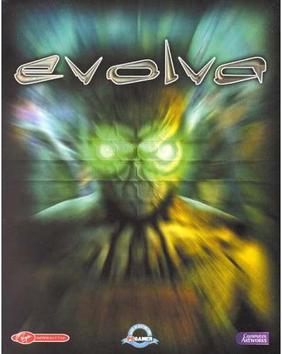
Evolva is a third-person action game created by British computer artist William Latham and game designer/programmer Mark Atkinson, and released in 2000.
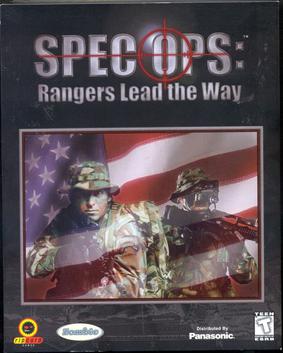
Spec Ops: Rangers Lead The Way is a tactical shooter video game developed by Zombie Studios and published by Ripcord Games exclusively for Windows. Players take control of United States Army Rangers; the game's subtitle is the Ranger motto. It is the first game in the Spec Ops series.
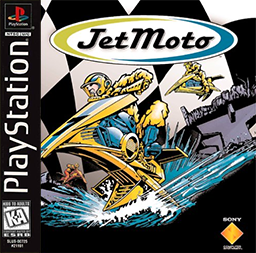
Jet Moto is a 1996 racing video game developed by SingleTrac and published by Sony Computer Entertainment for the PlayStation video game console and PC. The PlayStation version was released in North America on October 31, 1996; in 1997 for Europe in February and Japan on August 7. The PC version was released on November 13, 1997. Jet Moto was made available for the PlayStation Portable and PlayStation 3 via the PlayStation Network in February 2007. Developers chose fictional hovering bikes instead of wheeled motorcycles initially to resolve performance concerns. Other performance concerns led the team to develop two different physics systems—one for the player, and one for the 19 computer racers.
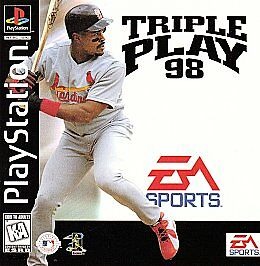
Triple Play 98 is a baseball sports video game released for the PlayStation and Microsoft Windows in 1997. It was developed and published by EA Sports, and is part of the Triple Play series after Triple Play 97. The game's cover features Brian Jordan of the St. Louis Cardinals.

Creatures is an artificial life simulation packaged as a video game developed by British studio Creature Labs for Windows, and was ported to Macintosh, PlayStation, and Game Boy Advance. It is the first game in the Creatures series.

Heavy Gear is a 1997 computer game made for the Windows 95 operating system, based on the Heavy Gear role-playing game. A sequel, Heavy Gear II, was released in 1999.
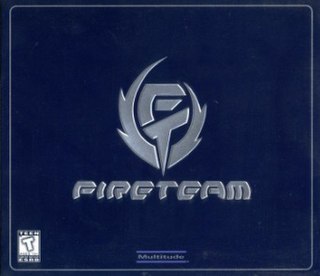
FireTeam is a 1998 video game developed by Multitude, Inc. for Windows.

ESPN X-Games Pro Boarder, also known as X Games Pro Boarder, is a video game developed by Radical Entertainment and published by Electronic Arts and Sony Computer Entertainment Europe for the PlayStation and Windows in 1998.
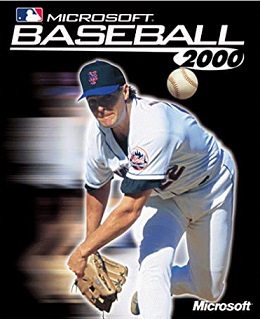
Microsoft Baseball 2000 is a sports video game developed by WizBang! Software Productions and published by Microsoft. It was released for Microsoft Windows in 1999, as an updated version of Microsoft Baseball 3D 1998 Edition. Critics considered the game to be an improvement over its predecessor. It received praise for its graphics and $20 price, but was criticized for containing various glitches. It was followed by Microsoft Baseball 2001.

TNN Outdoors Pro Hunter is a sports game developed by DreamForge Intertainment and published by ASC Games for Microsoft Windows in 1998. A sequel, TNN Outdoors Pro Hunter 2, was released in 1999 developed by Monolith Productions using their LithTech engine.




















